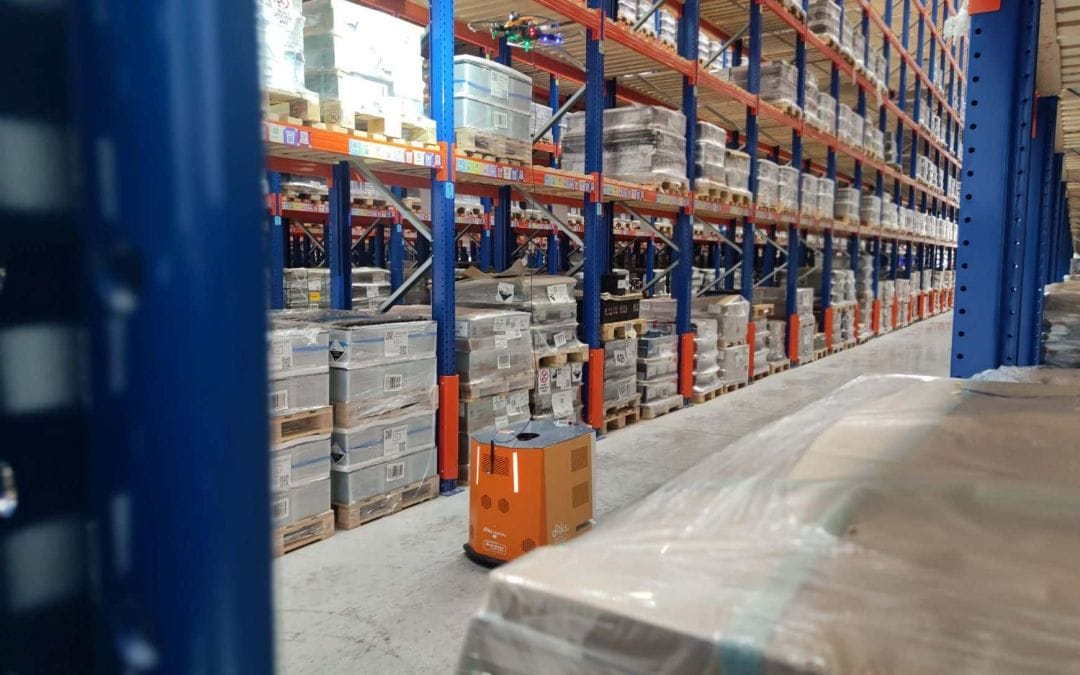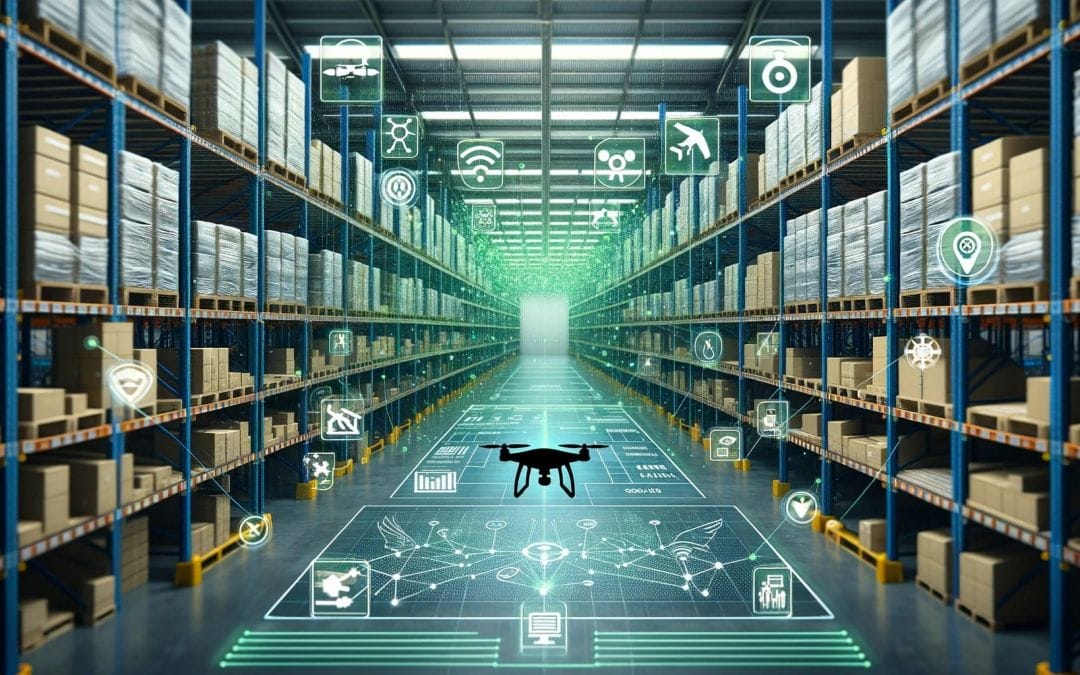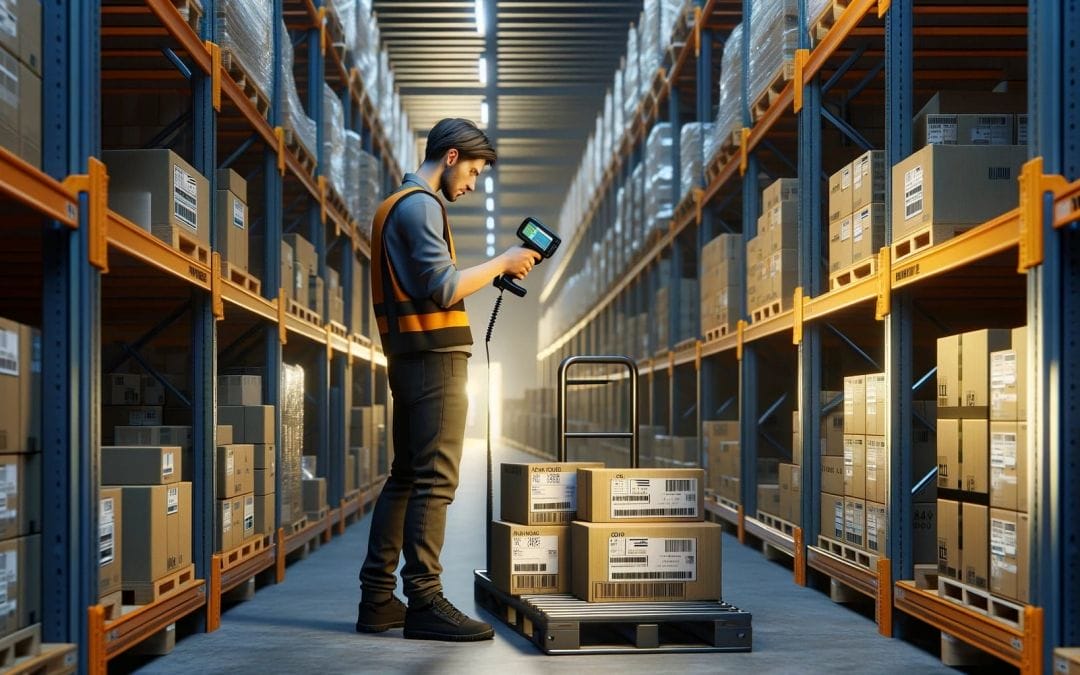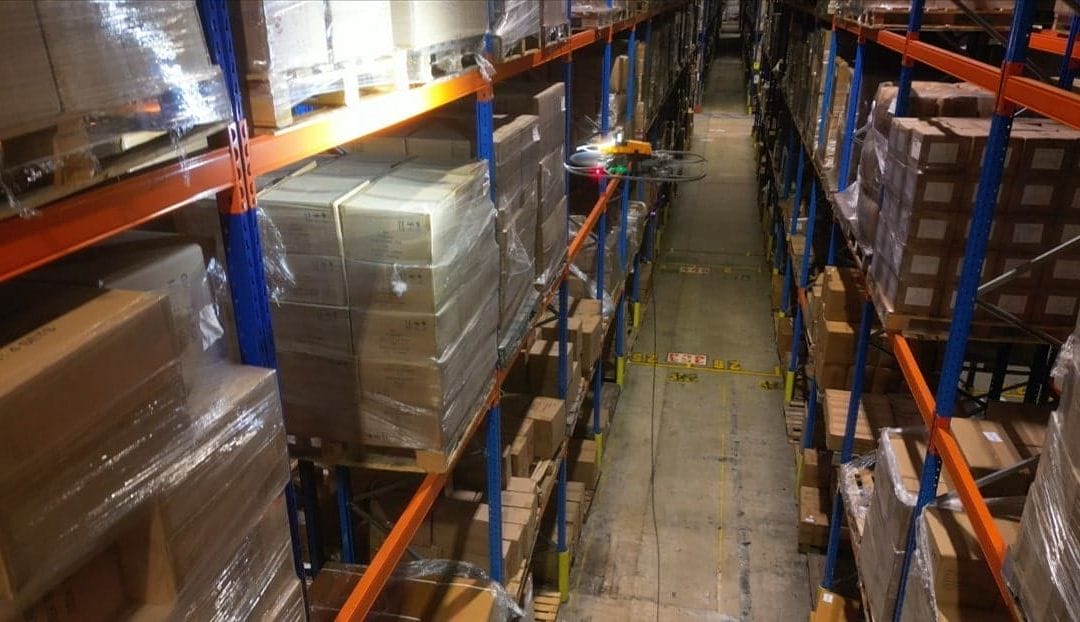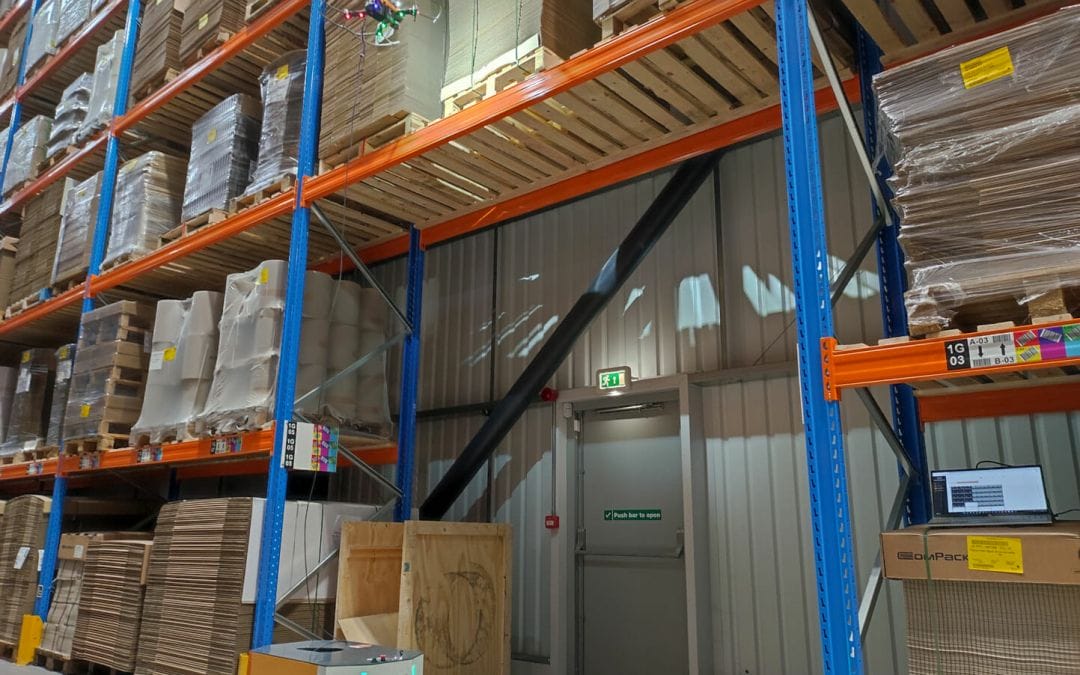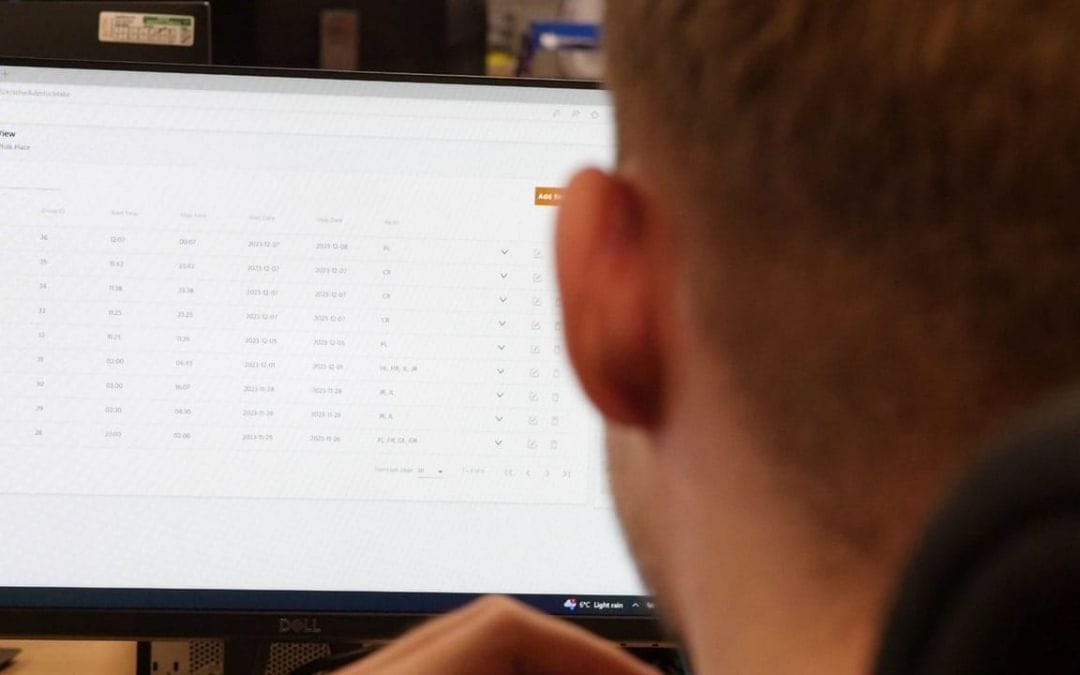How to increase productivity with Autonomous Drones in Warehouse Management and logistics
Ever wondered how you could further boost your warehouse productivity?An what if I told you, you can achieve this without any additional man-power?Automating your warehouse inventory counts with drones can help save time and money, increase accuracy and maximise productivity. We’ll talk you through how.
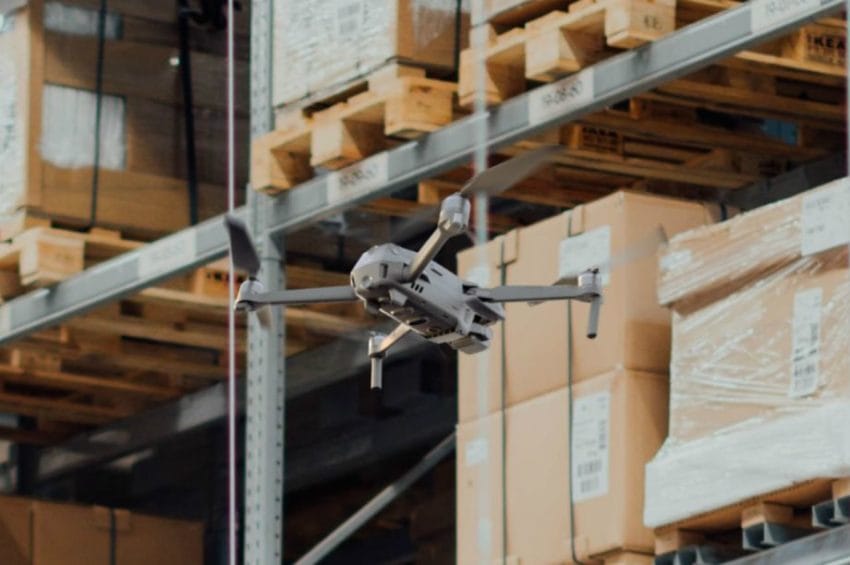
With the global shift to online shopping, supply-chain and warehouse managers find themselves under the gun to make their warehouses fit for purpose in a world of high volume and rapid velocity of goods.
Higher volume of goods, that are moving faster than ever before, is obviously great news in terms of revenue, but it also leads to significant pressure on important performance metrics in the warehouse; none more so than operating margin.
In this post, we’re going to explore how autonomous drone technology is resolving some of warehouse management teams’ most complex challenges.
TABLE OF CONTENTS
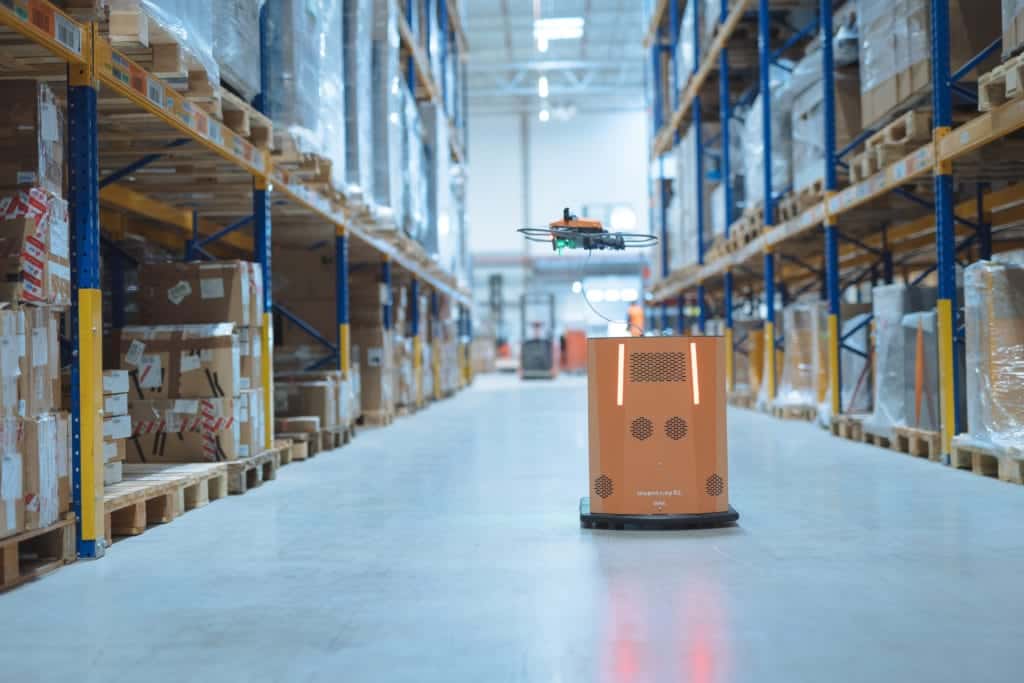
Inventory drones are best suited to facilities that suffer either from inaccurate inventory records, or who find staying on top of inventory with regular manual counts a significant cost implication.
How to increase warehouse productivity in the Warehouse Management System
Firstly, it’s important to understand what the productivity metric is actually telling us.
Put simply, productivity gives us an indication of how effective an operation is at generating an output. If we put this in the context of a warehouse operation, you could think of the ‘output’ as the fulfilment of an order. For example, a highly productive warehouse operation is able to fulfil more orders in a day/week/month etc. than a less productive operation with the same labour resource can.
There are many factors that influence warehouse productivity, but one of the best ways to increase the productive output of a warehouse workforce is to reduce the amount of time it spends on unproductive tasks – a great example of this is routine stocktaking. Whilst it’s clearly a critical job, it reduces the time that’s available for revenue-generating work, eg. preparation and dispatching of orders.
With the new role of a drone in inventory management, warehouse operations can now fully automate their stocktaking activity, therefore enabling a higher proportion of their workforce’s available time to be spent on more productive tasks in the warehouse.
How can autonomous warehouse drones help?
As mentioned above, the main purpose of autonomous drones in a warehouse environment is to automate unproductive inventory control tasks, such as stocktaking, inventory searches, stock reconciliation and audits.
Drones are also proven to complete inventory counts much faster than humans can. As a result, operational downtime of the aisles can be kept to an absolute minimum.
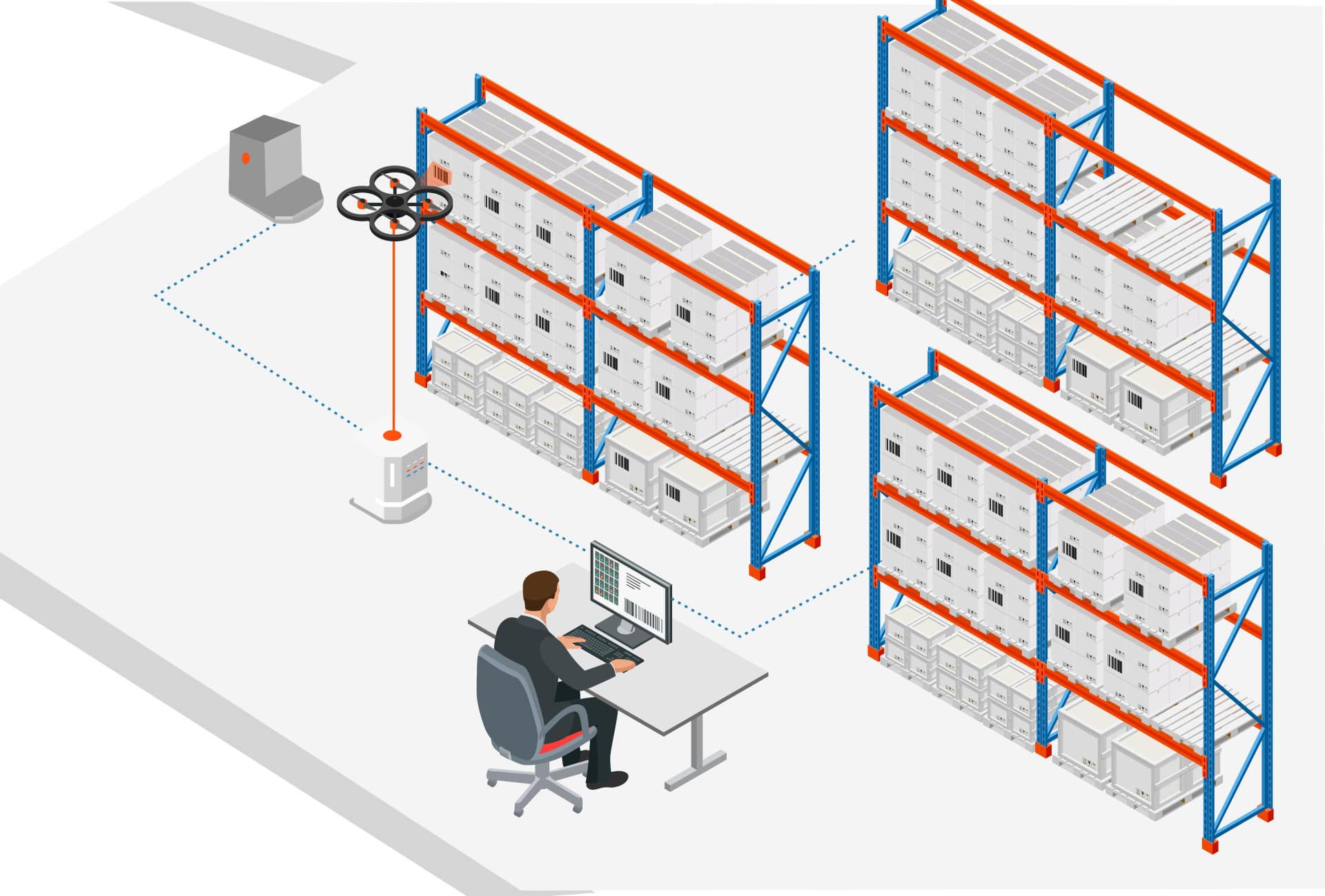
inventAIRy XL launches from its charging station at the scheduled time.
Ground vehicle navigates autonomously to each set of rack positions.
Drone flies up and down the rack levels, scanning every pallet barcode label as it goes.
Empty locations are automatically detected.
Scanned data is processed on the ground vehicle and comparison with WMS records are visualised in an intuitive user interface.
Other benefits of deploying drones in the warehouse
Improved inventory accuracy – Because we can now relieve humans of the onerous yet important task of stocktaking, count frequency can be dramatically increased. In turn, this improves inventory data currency and accuracy, which reduces the time staff spend looking for ‘misplaced’ stock.
Improved health and safety – With humans out of the loop, safety risks associated with working at height and human proximity to forklifts is greatly reduced. Drones can access even the most hard to reach pallet locations in the warehouse.
Better fulfilment metrics – Compared to humans with pen and paper or handheld barcode scanners, automated drone scans are considerably faster. This means that the warehouse needs fewer hours of aisle closures, so operational uptime is optimised.
Visual assessment – Each bin or cell is photographed by the drone as it conducts the scan. This data can then be used by warehouse stakeholders manually (for audits, second counts, etc.) – as well as by algorithms for object recognition, empty/full slot detection, etc.
Existing systems uninterrupted – The solution is designed to integrate with existing systems and processes, so information scanned by the drones is seamlessly and automatically compared against WMS records. Furthermore, the system does NOT require any infrastructural changes to the warehouse.
FAQs
Q: Will this solution actually save us money?
A: The million dollar question! So long as your stocktaking activity involves more than one full-time member of staff, the inventAIRy XL solution will almost certainly provide an immediate cost saving. Other sources of ROI come in the form of greater inventory accuracy (ie. less wasted time), reduction in the use (and associated cost) of MEWPs, and maximised uptime of aisles during counts.
Q: Are there any regulations for using drones indoors?
A: No. The UK drone laws are all about protecting airspace users, ie. manned aircraft. As the operation is being conducted indoors, the drone laws you may have read about are not applicable to your operation.
Q: How are the drones controlled when there is no pilot?
A: The Operation Centre is pre-programmed with the specific warehouse layout, the system then takes control of the drones to execute their programmed flight routes.
Q: What happens when the drones are not in operation?
A: When the drones have completed their mission, they automatically return to charging stations where they recharge in readiness for the next mission.
Q: Can the solution be deployed in multiple zones within the warehouse?
A: Yes. The solution can be used in multiple zones, either by having a single drone crossover from one zone to another, or by deploying multiple drones in parallel. The right format depends on the specific warehouse layout and cycle counting targets. All of which we help you with during the feasibility phase.
Q: How soon can a Proof-of-Concept be deployed at my warehouse?
A: A PoC can be deployed in less than a week (assuming contract execution and availability of RAWview’s deployment team). Contact us for more information about running your PoC.
Q: Is a certified drone pilot required to operate the solution?
A: No. The inventAIRy XL solution is completely autonomous – no manual involvement is required for take-off, navigation, or landing. Thus, a pilot (skilled or otherwise) is NOT required.
Q: What happens if something goes wrong while flying a drone?
A: All flying is controlled autonomously, so the human error factor is removed. That said, the solution is designed with a number of in-built safety features. These include automatic obstacle detection and avoidance, automatic low battery return to home, automatic critical battery landing etc.
Find out more how our drone application can revolutionise your automation in the warehouse:
Learn more
Or get in touch:
Find out more about the application of drones in warehouses by:
- Emailing us at [email protected]
- Calling us on 0203 488 4071
Revolutionise your warehouse
See our exclusive whitepaper to find out how you can enhance your warehousing and logistics operations


